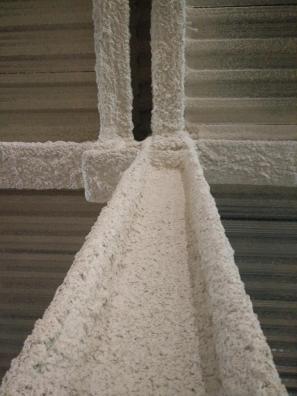

How to minimise house fires
Construction materials such as brick, concrete, cement, plaster and steel are safe because they do not combust and, therefore, do not produce flames or smoke. But the materials in furniture can play a decisive role in the faster or slower spreading of a fire because they are not subject to restrictions. Sectors such as the naval or railway have already developed protocols for testing and validation to prevent fast propagation and the emission of toxic smoke, insofar as possible. Now it is time for homes.
Traditional construction materials such as bricks, cement and plaster are safe in the event of a fire because they do not have a fire load, which is understood as the capacity to combust, producing flames and smoke, “which are always toxic and the main cause of deaths in a home”, according to Carlos Roder, of the Tecnifuego Committee of Manufacturers of Passive Protection (Spanish Association of Fire Protection Companies).
The capability of construction materials to combust and produce smoke is measured, and therefore, they can be classified according to Euroclasses that are accepted throughout the entire European Union. “The best material, that does not burn or produce smoke, is classified as A1, followed by (from best to worst) A2, B, C, D and F. Another variable measured in these materials is smoke opacity (s1, s2, s3) and production of “flaming” droplets (d0, d1, d2).
Reaction and resistance
To minimise the consequences of a possible fire, the materials used in the construction of a home should have “the largest possible index of fire reaction and resistance”, according to Esmeralda Gutiérrez, Technical Director of Previnsa (Prevention of Fires Applied Security). As for the reaction, they should be “A1 (not combustible, do not contribute to fire), S1 (low opacity of the smoke produced) and d0 (without droplets or flammable particles)”. And as for fire resistance, they should “maintain it as long as possible (360 min.) and, if possible, meet all of the parameters: R (bearing capacity), E (integrity) and I (thermal insulation). All this based on UNE EN 13501-1”.
Gutiérrez provides as examples of these type of materials, concrete, prestressed concrete and steel, as well as the use of special mortars (such as plaster + perlite or vermiculite, for example), fireproof plates (for example, made of plaster or cement) and fire-resistant paint (intumescent or fireproof) that “will help increase fire resistance and reaction”.
Furniture without restrictions
Carlos Rodero explains that construction materials, for example, on a façade “must have the corresponding classification on their labelling, by which users can easily check if an element contains a fire load or not, its smoke emission and droplet generation”. However, home furniture “is not subject to restrictions or classifications, which favours the risk of generation and propagation of a fire”.
Other sectors such as the naval or railway have already developed protocols for testing and validation to prevent fast propagation and the emission of toxic smoke, insofar as possible. But now it is time for homes. “The European Union is already working on the matter and, sooner or later, there will also be tests and classifications of these emissions”, said Rodero.





